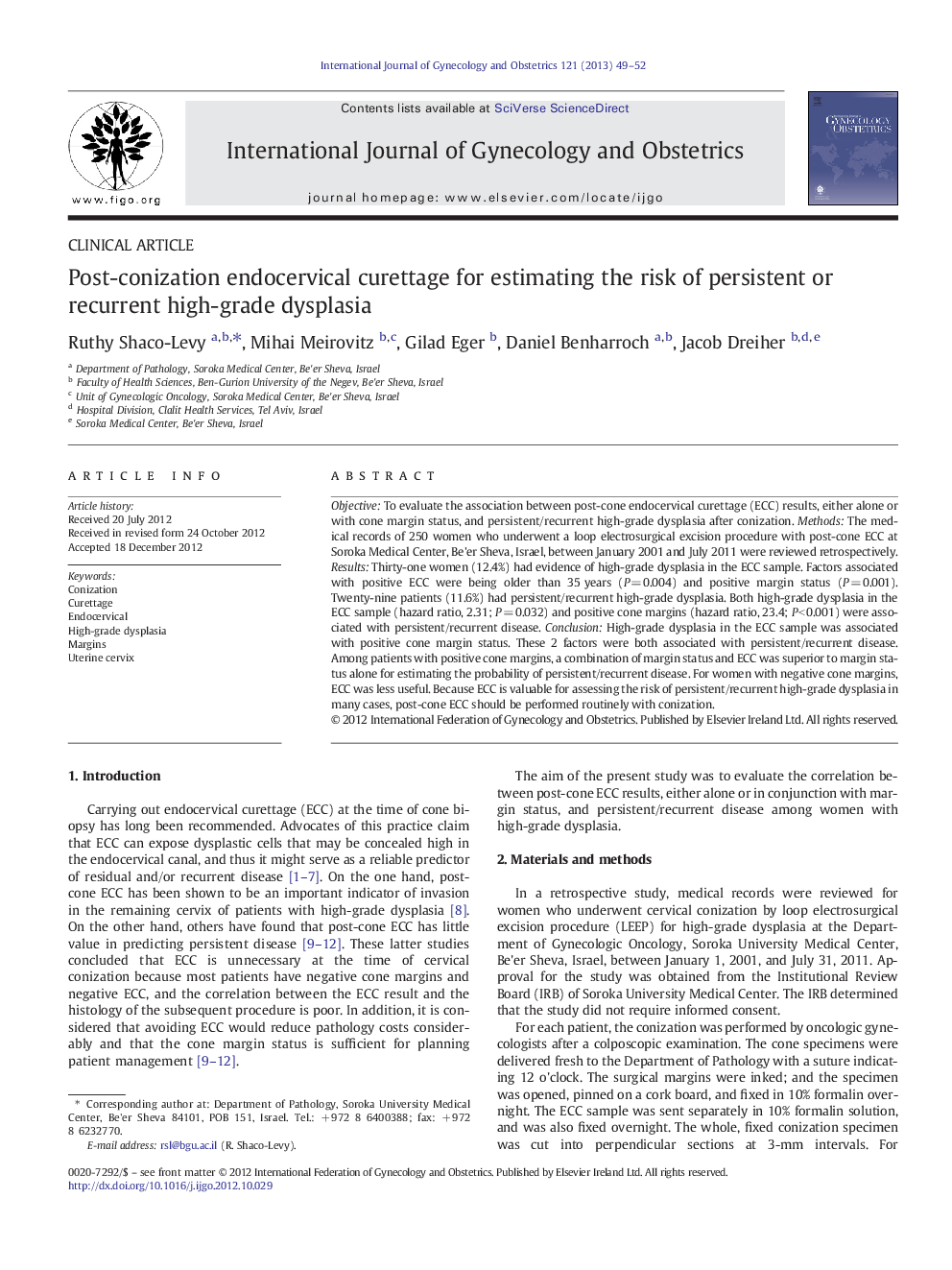| Article ID | Journal | Published Year | Pages | File Type |
|---|---|---|---|---|
| 3953068 | International Journal of Gynecology & Obstetrics | 2013 | 4 Pages |
ObjectiveTo evaluate the association between post-cone endocervical curettage (ECC) results, either alone or with cone margin status, and persistent/recurrent high-grade dysplasia after conization.MethodsThe medical records of 250 women who underwent a loop electrosurgical excision procedure with post-cone ECC at Soroka Medical Center, Be'er Sheva, Israel, between January 2001 and July 2011 were reviewed retrospectively.ResultsThirty-one women (12.4%) had evidence of high-grade dysplasia in the ECC sample. Factors associated with positive ECC were being older than 35 years (P = 0.004) and positive margin status (P = 0.001). Twenty-nine patients (11.6%) had persistent/recurrent high-grade dysplasia. Both high-grade dysplasia in the ECC sample (hazard ratio, 2.31; P = 0.032) and positive cone margins (hazard ratio, 23.4; P < 0.001) were associated with persistent/recurrent disease.ConclusionHigh-grade dysplasia in the ECC sample was associated with positive cone margin status. These 2 factors were both associated with persistent/recurrent disease. Among patients with positive cone margins, a combination of margin status and ECC was superior to margin status alone for estimating the probability of persistent/recurrent disease. For women with negative cone margins, ECC was less useful. Because ECC is valuable for assessing the risk of persistent/recurrent high-grade dysplasia in many cases, post-cone ECC should be performed routinely with conization.
